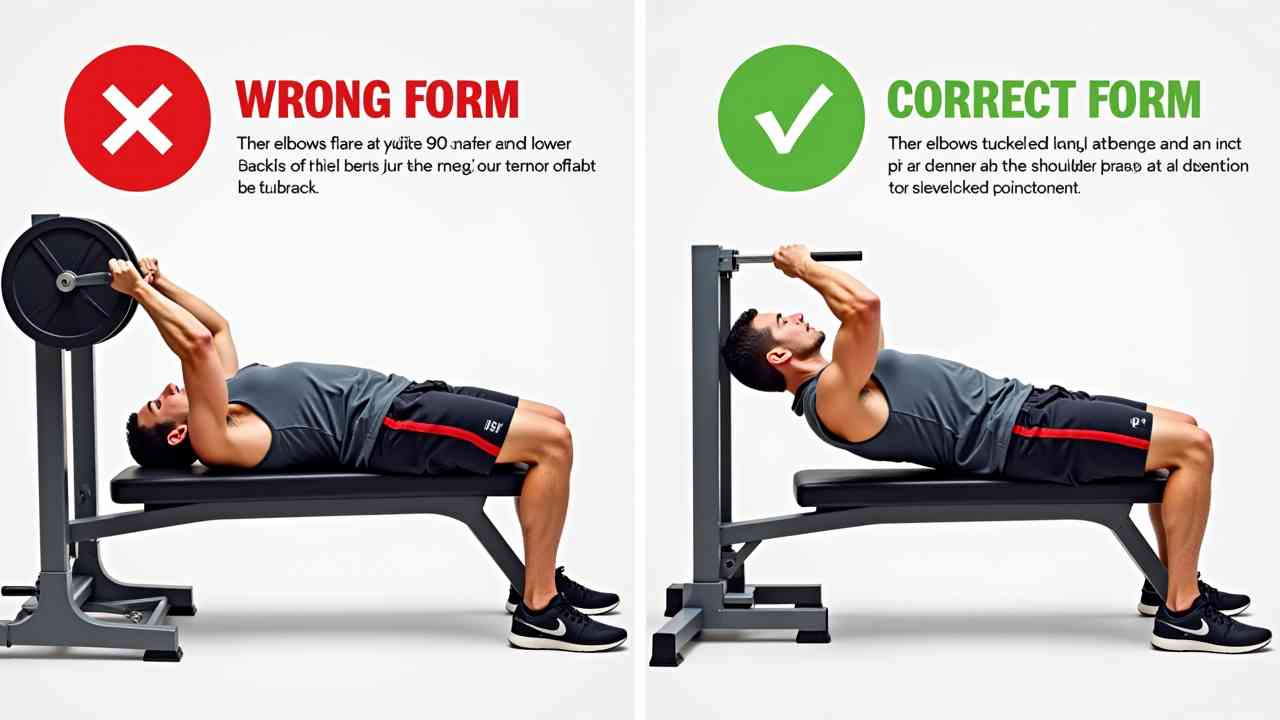
🏋️♂️ A Guide to Using Weights on a Bench (The Bench Press)
🏋️♂️ A Trainer's Guide to Using Weights on a Bench (The Bench Press) 🏋️♂️
Using weights on a bench is the foundation of almost every strength training program. The "king of all upper body exercises" is, of course, the bench press. It is a fundamental compound lift that is unmatched for building strength and muscle in the chest, shoulders, and triceps.
However, it is also one of the most improperly performed exercises in the gym, which can lead to shoulder injuries. To get all the benefits without the risks, your form must be perfect. This guide will walk you through the essential steps for a safe and powerful bench press. ✅
🤔 First, What is the Most Important Rule? (The 5-Point Contact Setup)
A safe and powerful press is all about stability. Before you even unrack the weight, you must establish your "5-point contact" with the bench and the floor. This creates a solid, stable foundation for your lift.
Your five points of contact are:
- Head: Your head should be resting firmly on the bench.
- Upper Back: Your shoulder blades should be squeezed together and driven into the bench. This creates a stable "shelf" to press from.
- Glutes: Your glutes should be firmly on the bench.
- Left Foot: Your left foot must be planted flat on the floor.
- Right Foot: Your right foot must be planted flat on the floor.
Only when all five of these points are secure are you ready to lift.
- How to Perform the Bench Press (Step-by-Step)
Once you are set up, it is time to press. Follow these steps for a perfect rep.
1. The Grip: Grip the barbell slightly wider than shoulder-width. Your grip should be strong, with your thumbs wrapped securely around the bar (never use a thumbless or "suicide" grip).
2. The Unrack: A spotter can help you, but you should be able to unrack the bar yourself. Bring it out so it is stable directly over your shoulders, with your arms locked.
3. The Descent (The #1 Mistake!): This is where most injuries happen. Do NOT flare your elbows out to the side at a 90-degree angle. This puts immense stress on your shoulder joints. Instead, tuck your elbows to a 45-degree angle as you lower the bar in a controlled motion. The bar should touch your mid-to-lower chest (near the sternum), not your neck.
4. The Press: From your mid-chest, drive with your feet on the floor and push the bar back up and slightly back, so it ends over your shoulders where it started.
- What About Dumbbells vs. a Barbell?
Using weights on a bench does not always mean a barbell. Dumbbells are a fantastic alternative and, for some, a better choice.
- Barbell: This is the best tool for lifting the absolute maximum amount of weight and building pure, raw strength.
- Dumbbells: These are better for increasing your range of motion. They also force each arm to work independently, which is great for building stabilizer muscles and fixing any strength imbalances.
⭐ What Are the Most Important Safety Tips?
1. Always Use a Spotter: When you are lifting heavy or trying to set a new personal record, you must have a spotter. If you are training alone, use a power rack with the safety pins set just below your chest.
2. Master the Form First: Do not worry about how much weight is on the bar. Start with an empty bar and perfect your 5-point contact and 45-degree elbow tuck. Bad form with heavy weight is a fast track to injury.
The cool autumn season is a perfect time to start a new strength program in the gym. Focus on your form, stay consistent, and you will see amazing results in your upper body strength. 💪